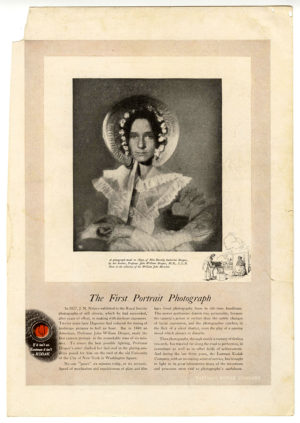Datum/Zeit
Date(s) - 08/07/2019
19:00 - 22:00
Veranstaltungsort
Max Liebermann Haus [1]
auf Google-Maps ansehen [2]
Kategorien
- Vortrag [3]
Arnheim Lecture
Prof. Dr. Asko Lehmuskallio
(Tampere University`s New Social Research Programme)
Ubiquitous photography and situated attachment suggestions
New camera technologies for everyday use are celebrated as granting visibility to the disenfranchised, as a means of connecting intimately over a distance, and as a way to broaden narrower modes of representation. At the same time, they are repeatedly met with unease and discomfort, because they seem to intrude on our privacy and call into question established patterns of social interaction. Visibility, considered essential for making of meaningful connections, continues to be discussed also as a trap.
This talk explores ways in which cameras, intended for everyday use, are provided with situated attachment suggestions, which influence how they get perceived and further used. By focusing on empirical case studies done among camera developers and users, the talk reveals how these suggested couplings tend to focus on specific body parts that are socially stratified. The socially stratified bodies, in turn, become inscribed in the material characteristics of the devices developed, in a pattern that influences societal power relations. This has important implications once these devices enter use settings very different from those initially intended or envisioned.
The lecture draws particular attention to the ways in which early Kodak advertisements prefigured many of the arguments used to sell today’s digital camera technology, how developers of early mobile camera phones searched for feasible use cases, and the manner in which snapshot photography is growing increasingly entwined with efforts to automate detection, identification, and authentication. The analysis suggests that snapshot photography has become a core experimental site for negotiating emotionally intimate connections, privileged access, and practices of monitoring identity and behaviour.
– – – – –
Prof. Dr. Asko Lehmuskallio is a scholar in visual studies and media studies, who focuses on the interrelations among bodies, images, and (networked) camera technologies. He is Associate Professor in the New Social Research Programme at Tampere University, Finland, and has studied and worked at universities in Germany, Spain, Finland and the US, including the GRK Image-Body-Medium at HfG Karlsruhe, the Helsinki Institute for Information Technology HIIT and the iSchool at UC Berkeley. His ongoing research projects, funded by the Academy of Finland, focus on ‘Banal Surveillance’ (as PI) and ‘Digital Face’ (as Co-I).
Among his recent works and edited collections are Pictorial Practices in a ‘Cam Era’ (2012); #snapshot: Cameras Amongst Us (2014), co-edited with A. Rastenberger; Digital Photography and Everyday Life (2016), co-edited with E. Gómez Cruz; Mobile Digital Practices (2017), co-edited with A. Rammella, T. Thielmann, and P. Abend; and journal articles published in venues such as Visual Communication, Journal of Visual Literacy, Journal of Aesthetics & Culture, and IEEE Pervasive Computing. Further details are available at https://research.uta.fi/comet/asko-lehmuskallio/.

